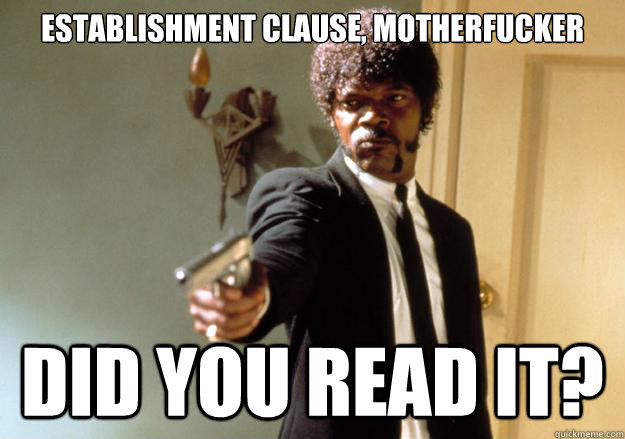
McCreary County v. ACLU of Kentucky (2005) said a Ten Commandment display on the courthouse wall violates the Establishment Clause of the First Amendment.
In regards to the facts, here’s McCreary County v. ACLU of Kentucky. McCreary and Pulaski counties had placed the King James’s Ten Commandments on the wall of their court houses. After the counties were sued in the federal court by the Kentucky ALCU, the court house put up a second and third display which the federal court ordered removed.
When it comes to a Supreme Court rule, McCreary County v. ACLU of Kentucky provided the following: Religious documents placed on the wall of court houses is a violation of the First Amendment’s Establishment Clause.
McCreary County v. ACLU of Kentucky proposed this issue before the Supreme Court: Is placing the Ten Commandments on a courthouse a violation of the Constitution’s Establishment Clause?
Interestingly, the McCreary case delivered this holding. The Supreme Courts said the Kentucky county courthouses violated the Establishment Clause by promoting religion, which anyone could see. To begin, the first display showed the Ten Commandments in isolation; furthermore, the Ten Commandments were shown along with other religious passages. Finally, the courthouses showed the Ten Commandments in a presentation titled “Foundations of American Law,” which was used to keep any religious document on the wall.
In the majority opinion, Justice Sandra Day O’Connor had some interesting words. She said: “They[the Founders] worried that ‘the same authority which can establish Christianity, in exclusion of all other Religions, may establish with the same ease any particular sect of Christians, in exclusion of all other Sects.’ Memorial 186. The Religion Clauses, as a result, protect adherents of all religions, as well as those who believe in no religion at all.” She reiterated the Founders didn’t want to establish one religion at the exclusion of the other religions.
When it comes to the Establishment Clause, there are lots of tests. Mainly, these Establishment Clause tests include: The Endorsement test, Lemon test, and the Coercion test. However, there’s no definitive Establishment Clause test.
Actually, the Established Clause meant something different at the time of the founding of the Constitution. Basically, the First Amendment’s Establishment Clause only applied to Congress; therefore, states could have their own state official religions. In fact, Barron v. Baltimore back up this fact that the First Amendment only applied to Congress at that time. That being said, many states had official religions at this time in history.
In Van Orden v. Perry, the Supreme Court reversed it’s thinking about Ten Commandment displays. It said a display in Austin, Texas, was permissible because it was large granite statue display. This large display did not violate the Establishment Clause.
In Summary, McCreary County v. ACLU of Kentucky. McCreary said no Ten Commandment displays in courthouses. This is a violation of the First Amendment’s Establishment Clause.